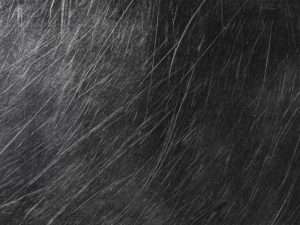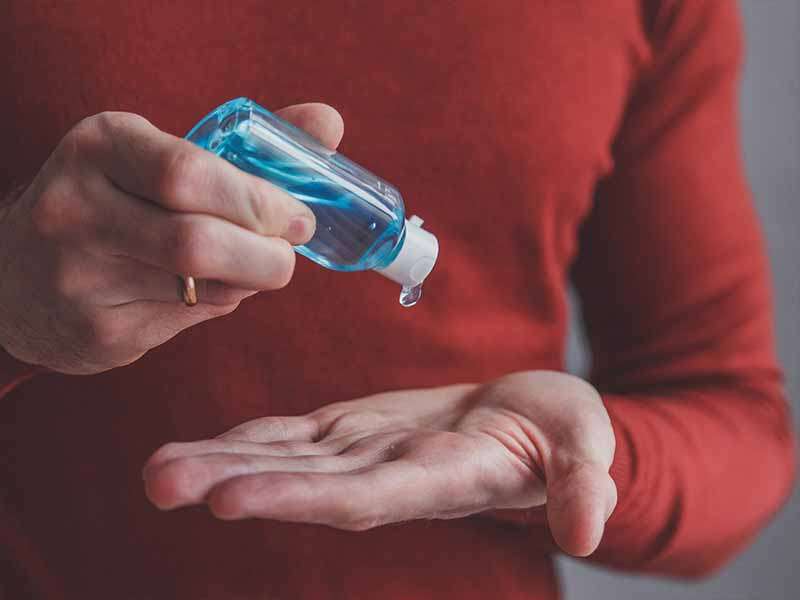Table of Contents
Have you noticed tiny orange specks on the surface of your vehicle’s paint and have no idea where they have come from? These tend to show up better on lighter colored vehicles, such as white cars, as opposed to darker colored vehicles like black cars.
What Is Rail Dust?
Rail dust is a specific term that is used to describe the tiny metal particles that have landed on your vehicle and begun to rust over time. This term was initially coined to describe the specks of rust that ended up on vehicles that were being transported via train.
Due to the significant friction between the train wheels and rails, rust would get into the air with dust particles and settle onto the transported vehicles. These particles would embed themselves into the vehicles’ clear coat and rust over time. When the vehicles were uncovered, the sun would heat up the finish, increasing the speed of the entire process.
However, rail dust does not only come from railroad transportation. It can come from virtually anywhere.
These tiny little red or orange specks are not your normal dust, dirt, and debris that will come off when you do your regular maintenance wash. Unfortunately, these small colored spots are pieces of metal particles that actually embed into the clear coat and end up rusting.
Most car owners are unfamiliar with these rust spots that are often called rail dust. Because of this, we are going to share some helpful information regarding rail dust.
What Causes Rail Dust on Cars?
Rail dust typically comes from the following places:
- Transporting a vehicle from the factory to a nearby local dealership by rail road track
- Fallout from natural or industrial sources
- Brake dust from the brakes of the vehicle
However, rail dust can come from any number of places where metal particles exist.
Rail Dust on a Brand New Car
You may expect rail dust to occur on older vehicles, but you may not expect it to appear on brand new cars. But it happens more often than you may believe.
The reason for this is due to the fact that many vehicles are transported by train from one location to the next. Unfortunately, as you’ve learned, train tracks are chalked full of rail dust.
Some auto manufacturers cover their vehicles in plastic when being transported via rail, but some don’t offer this type of luxury.
Of course, even when new vehicles aren’t being transported via train and are instead being moved by a tractor trailer truck, it is still possible for rail dust—or brake dust, more specifically—to make its way onto the paint of the brand new car.
Can Rail Dust Be Removed?
Yes, rail dust can be removed. This is good news, since no one wants to have tiny orange specs on their vehicle. It’s not only annoying, but it’s also unattractive. The thing is that rail can come back if you do not remove it properly.
Does a Clay Bar Remove Rail Dust?
One of the most common effective ways to remove rail dust from your vehicle is with a clay bar. With a clay bar, you must gently scrub the paint down with the bar. You should also maintain a wet surface with a spray bottle. This helps to reduce the friction that can build up between the clear coat and the clay bar, preventing potential marring. The clay bar technique takes a lot of time and effort on your end, but it is incredibly effective at removing rail dust.
What Removes Rail Dust?
A clay bar is not the only way to remove rail dust from your vehicle. There are several other ways, including ways that are easier and require less effort on your part. For example, a rail dust remover can be used to remove rail dust from paint and is quick, easy, and safe.
With a rail dust remover, the process is incredibly simple. You simply wash your vehicle, spray on the rail dust remover (follow the instructions on the product), wait several minutes, and then wash the vehicle with lots of water and a soft sponge.
How Do You Remove Rail Dust from Paint?
Regardless of the method you choose, it is imperative that you thoroughly wash and dry the exterior of your vehicle before anything else. This maintenance car wash will help to remove any dust, dirt, and grime on the paint’s surface.
Next, you use the product you’ve chosen to use to remove the rail dust. You can use an iron remover (rail dust remover) or a clay bar. Alternatively, you can use them both for the most effective results.
When using the iron remover, though, keep in mind that there will be a chemical reaction and the product will change colors as it sits on your vehicle for several minutes.
Once you have finished with the iron remover, clay bar, or both products, you need to add an additional layer of protection to the paintwork. This can be done in the form of a paint sealant or car wax.
Will Rail Dust Come Back?
Yes, there is a good chance that rail dust will come back. After removing rail dust from your vehicle initially, you may start to notice signs of it again within just a couple of months. The reason for this is because the source of the rail dust has never been addressed. This is why it is so important to learn what you can do to prevent—or at least minimize—rail dust from occurring and reappearing.

How Do You Prevent Rail Dust?
In order to understand how to prevent rail dust, you must determine where it is coming from. Essentially, you must figure out where these harmful metal particles are coming into contact with your car’s paint surface.
So, if you believe the rail dust is coming from an actual rail, you should avoid any active railroad tracks whenever possible. This includes driving over them or parking near them. This includes those “Park and Ride” areas near commuter rails. The closer you are to the rail, the more at risk your vehicle is for being exposed to rail dust particles.
Since rail dust can also come from your brakes, you will want to opt for brakes that have fewer ferrous metals. For example, purchase ceramic brake pads the next time you need brake pads instead of a semi-metallic pad. It may just be worth the extra money you spend to avoid that rail dust on your paint.
You should also consider taking a close look at your workplace, especially where you are parking. Consider and assess the possible industrial fallout sources. For instance, you will want to avoid parking near any work areas where there is welding, grinding, and cutting occurring. Small particles of metal can be generated during these processes and be thrown quite a distance, potentially landing on your vehicle.
Conclusion: Is Rail Dust Bad?
We hope that you now understand what rail dust is and how it can be removed from your vehicle’s paintwork.
Keep in mind that rail dust may not be pretty, but it can indeed be removed from your vehicle with a little bit of time and elbow grease.
In order to prevent it, you must consider where you are taking and/or parking your vehicle each day, as this is generally where the rail dust is coming from.










